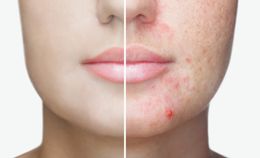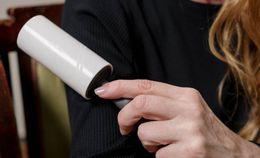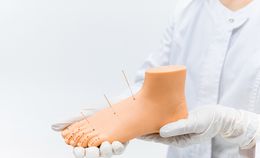What is craniosacral therapy?
Craniosacral therapy or CST refers to a family of hands-on healing techniques in which practitioners apply a gentle, healing touch to the bones, soft tissues and cerebrospinal fluid that surround the central nervous system. The soft tissues and fluid, along with the skull, are known as the craniosacral system and support the central nervous system, which is made up of the brain and the spine. Gently massaging the craniosacral system can help relax and release tension that is causing pain, as well as promote overall health and wellness.
Craniosacral therapy is practiced by licensed health professionals who have received specific certification in the practice. Compared with other forms of bodywork, craniosacral therapy is a particularly gentle approach. Craniosacral therapists apply only a minute amount of pressure to the patient. However, this can be sufficient to provide relief from a range of health conditions, including chronic pain, concussion and brain, and spinal injuries, and other disorders related to the central nervous system.
How does craniosacral therapy work?
Stress, tension, and injury can all cause the craniosacral tissues to tighten up or constrict. This puts a strain on the central nervous system and interferes with the proper functioning of the body, including the flow of cerebrospinal fluid. Craniosacral therapists use their hands to gently diagnose and release tension and stress from the craniosacral tissues surrounding the skull and the spine, reducing any associated strain on the central nervous system.
History and philosophy
Craniosacral therapy was developed during the late 20th century by Dr. John Upledger, a professor at Michigan State University. Dr. Upledger was an osteopathic physician with training in osteopathic manipulative therapy (OMT), a system of bodywork used for diagnosing and treating ailments. Dr. Upledger applied his knowledge of OMT in guiding his work creating craniosacral therapy. Today, osteopathic physicians often incorporate craniosacral therapy into their practice of OMT.
Dr. Upledger understood that properly supporting the structure of key aspects of the body like the craniosacral system could be essential to both healing from disease and maintaining wellness. His work was based on a theory, proposed decades earlier by osteopath Dr. William Sutherland, that the bones of the skull were actually mobile; that is, that the pieces of the skull are not completely static, but move slightly as part of the body's natural state of wellness. Dr. Sutherland devoted his life to researching the movement of parts of the skull-cranial bone motion, and developed a form of osteopathy, called cranial osteopathy, that was based on properly aligning that movement.
Dr. Upledger had encountered evidence of cranial bone motion himself, in the course of his own medical practice. His further study built upon Dr. Sutherland's study of cranial mobility and cranial osteopathy to create craniosacral therapy. Like Dr. Sutherland's cranial osteopathy, craniosacral therapy works with the movement of pieces of the skull, however, it also works with the craniosacral system as a whole, including the tissues and fluids that surround the spine.
Dr. Upledger explored connections to healing on energetic levels, including the transfer of energy between a patient and healing practitioner performing craniosacral therapy. He also expanded the teaching of craniosacral therapy beyond osteopathic physicians, instructing and certifying other qualified health professionals in his methods.
Biodynamic craniosacral therapy
Another school of craniosacral therapy, called biodynamic craniosacral therapy, built off of the work of Dr. Sutherland, Dr. Upledger, and other practitioners of craniosacral therapy and cranial osteopathy. Biodynamic craniosacral therapy is concerned with the mechanics and structure of the craniosacral system and the body, but also particularly focused on connecting with deeper life forces, including the body's natural healing energy and the breath. Biodynamic craniosacral therapists work to heal patients on physical and energetic levels.
Science
The concept and efficacy of craniosacral therapy is increasingly backed by science. The theory behind craniosacral therapy includes Dr. Sutherland's work on cranial bone motion, as well as subsequent research by Dr. Upledger and others into the tissues and fluid of the craniosacral system. The very idea of cranial bone motion, central to cranial osteopathy and later craniosacral therapy, was considered controversial for decades. However, research by Dr. Upledger found proof of cranial bone motion in x-rays taken of live adult skulls. This was confirmed by later researchers.
Today, studies increasingly show craniosacral therapy to be effective for treating numerous health conditions. One study, published in the Clinical Journal of Pain, found craniosacral therapy to be effective at treating neck pain in patients. Other recent research has found that craniosacral therapy can help treat concussions, back pain, fibromyalgia, and autism, among other conditions.
Method
During a craniosacral therapy session, you typically lie down on a table on your back. You are fully clothed for the entire session. Sessions typically last 30-45 minutes.
The craniosacral practitioner places their hands gently on your skull. Then, using only tiny, almost imperceptible amounts of pressure, they manipulate your skull to release tension and improve the flow of cerebrospinal fluid through the craniosacral system. Such adjustments can also be made on your spine, especially on your sacrum, or lower back area.
How will I feel after craniosacral therapy?
After a craniosacral therapy session, it is a good idea to drink lots of water. Your body may be releasing pent-up toxins into your bloodstream, and water can help flush them out.
You may experience feelings of relief or relaxation, or feel more tired than usual. Practitioners generally recommend taking it easy on your body for a day or two after a session, which means getting plenty of rest and avoiding strenuous activity. This can help your body adjust to any changes resulting from the session.
It is also not uncommon to experience trapped emotions coming up to the surface. Craniosacral therapists observe this is a good time to be patient with yourself. They suggest gently bringing any feelings that do come up into your awareness and using the experience to get more in touch with your body.
What are the benefits of craniosacral therapy?
People seeking relief from a number of ailments can benefit from craniosacral therapy. Many conditions that are connected to the central nervous system (the brain and spine) in one way or another can be treated or improved by craniosacral therapy, including:
-
Brain and spinal injuries, including concussion or traumatic brain injury
-
Disorders of the central nervous system
-
Disorders of infancy or childhood
-
Chronic fatigue
-
Tension
-
Fibromyalgia
-
Difficulty with coordination, movement or walking
-
Disorders of the central nervous system
-
Scoliosis
-
Processing disorders (sensory, visual or auditory)
-
Jaw disorders such as TMJ
-
Grief
Physical benefits
Because the central nervous system is essential to the function of the body and mind, conditions and disorders that affect the brain and spine can have a profound impact on overall health. When performed by a skilled practitioner, craniosacral therapy can be effective at relieving pain and stress on the central nervous system, either from an acute injury (such as back injury, concussion or traumatic brain injury), or chronic misalignment, wear and tear. The practice is noninvasive, requires no real recovery time, and has no significant side effects, unlike surgical or medication-based treatments.
Mental and emotional benefits
Illness in the body can have emotional as well as physical causes. Many bodywork practitioners, including craniosacral therapists, believe that emotional pain leading to depression, anxiety, trauma or grief is often held in the body in the form of tension. This tension can lead to physical health problems such as pain or other chronic conditions. Craniosacral therapy can help to release that tension, allowing you to let go of the old emotional pain. It is common for patients to experience old, trapped emotions coming to the surface after a session. Especially when approached with patience and mindfulness, this can be an opportunity to resolve them.
Chronic health conditions can also lead to depression and anxiety because they can make life so unpleasant and difficult. Craniosacral has been found to be useful in providing relief in some such circumstances. One study reported that people with fibromyalgia experienced less depression and a greater quality of life after receiving craniosacral therapy.
There is also increasing evidence that craniosacral therapy can benefit conditions that make learning difficult, such as autism. The practice has actually been used to treat autism for decades, but reports of success were anecdotal and had not been formally studied. However, one recent study found that craniosacral therapy improved cognition, social skills, and calm in children with autism.
Wellness
With health, prevention can go a long way. Craniosacral therapy, like other bodywork approaches, can help maintain your health and potentially prevent some chronic health problems related to the central nervous system from developing in the first place. In other words, if you're healthy, it can help keep you that way.
Safety and side effects of craniosacral therapy
Craniosacral therapy is considered a safe intervention that typically has no side effects. Because the amount of pressure applied by the practitioner is so low, it can be a helpful therapy for people who are particularly sensitive and are uncomfortable with other forms of bodywork like chiropractic or massage. For this same reason, craniosacral therapy can be used for infants and young children. However, craniosacral therapy is not recommended for anyone with severe acute head trauma or bleeding. For more in-depth information on the benefits and side effects of craniosacral therapy, read Heal.me's guide: Benefits and Side Effects of Craniosacral Therapy
References:
Craniosacral therapy: what is it really?
Sisco, Mariann, PT, CST
The International Alliance of Healthcare Educators
Selected Articles:
Craniosacral Therapy for the Treatment of Chronic Neck Pain.
Haller, Heidemarie, Romy Lauche, Holger Cramer, Thomas Rampp, Felix J. Saha, Thomas Ostermann, and Gustav Dobos.
The Clinical Journal of Pain, 2016
The Use of Craniosacral Therapy for Autism Spectrum Disorders.
Kratz, Susan Vaughn, Jane Kerr, and Lorraine Porter
Journal of Bodywork & Movement Therapies, 2017
Wetzler, Gail, Melinda Roland, Sally Fryer-Dietz, and Dee Dettmann-Ahern.
Medical Acupuncture, 2017
Mataran-Penarrocha, Guillermo A., Adelaida Maria Castro-Sanchez, Gloria Carballo Garcia, Carmen Moreno-Lorenzo, Tesifon Parron Carreno, and Maria Dolores Onieva Zafra.
Evidence-Based Complementary and Alternative Medicine, 2011





















